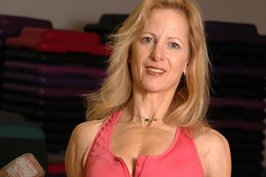Your “core” is simply the area from approximately your upper chest to your waist (the front, back and sides). Proper training of your “core” has many, many advantages. To prevent injuries from day-to-day activities, it is important to keep your core strong and flexible. Strong core muscles lead to good posture and make all types of activities easier. When both front and back muscles contract at the same time, your core muscles are working as a solid unit. Your spine is stabilized and you are able to optimize movement with effortless balance and coordination.
Core training:
— promotes good posture
— increases heart rate, burns calories and promotes weight loss
— tones muscles, improves flexibility, coordination and strength
— is a great form of cardiovascular exercise
— is a great stress reliever
— increases self-confidence.
Core training is more about the prevention of motion than the creation of motion: The heart of this fitness work is keeping the spine stable in an unstable environment or during unstable activity. Crunches (the most common core exercise) cause repeated forward flexion of the spine, which can result in spinal disk damage. According to the research of Stuart McGill Group, experts in physiological science, the “ab wheel rollout” is an excellent core exercise — and it has a much lower risk of injury. Good core training, however, comes in phases. One must first be able to execute a “plank” movement before attempting to do the “ab wheel rollout.” Listed below are essential core exercises leading to an effective “ab wheel rollout” that — done well — can be a major ingredient in achieving a strong body core.
1. Front plank. A perfect front plank looks like a body standing straight, but horizontally. Lie face down on the floor and place forearms flat on the floor, shoulder-width apart. The buttocks should not be too high off the floor and don’t let your body sag! Straight and steady! If you feel strain in your lower back in this position, raise your buttocks higher. Hold for one minute.
2. Side plank. Strive for the body to look like it is standing straight, but horizontally on its side. Lie on one side and raise your body up, supporting yourself with the elbow and forearm. Hips should not sag. Hold for one minute on each side.
3. Stability ball roll-out. Kneel about 14 inches behind the ball with the body vertical and palms resting firmly on the ball. Using the strength of your lat muscles, shoulders and core, roll the ball out to the “knee plank” position. Slowly return to the starting position. Repeat 15 times.
4. Stability ball roll-in. Begin in front plank position with hands on the floor, shoulders over the wrists and the shins resting firmly on top of the ball. Contract your abdominal muscles and draw your knees in toward your chest. Hold, and then roll the ball back to the starting position. Focus on keeping the core engaged throughout the exercise. Repeat 15 times.
5. Ab wheel roll-out. Kneel in front of the ab wheel. Place one hand on each handle and push away from the body until the body is horizontal. Pause, and pull back to the starting position. Keep movements slow and controlled. Repeat 15 times.
These are essential core training ab-focused exercises. There are many more advanced variations of front planks and side planks that can be adapted to your exercise routine for fun and excitement. No matter which ones you do, the bottom line is to replace the usual crunches with more effective and targeted movements to strengthen the entire core and limit injuries.
Rina Kaplan has been a specialized ACE-registered personal trainer for over 25 years, and is a registered personal trainer at 12th Street Gym. To learn more about Kaplan and other top trainers at 12th Street, visit www.12streetgym.com.

